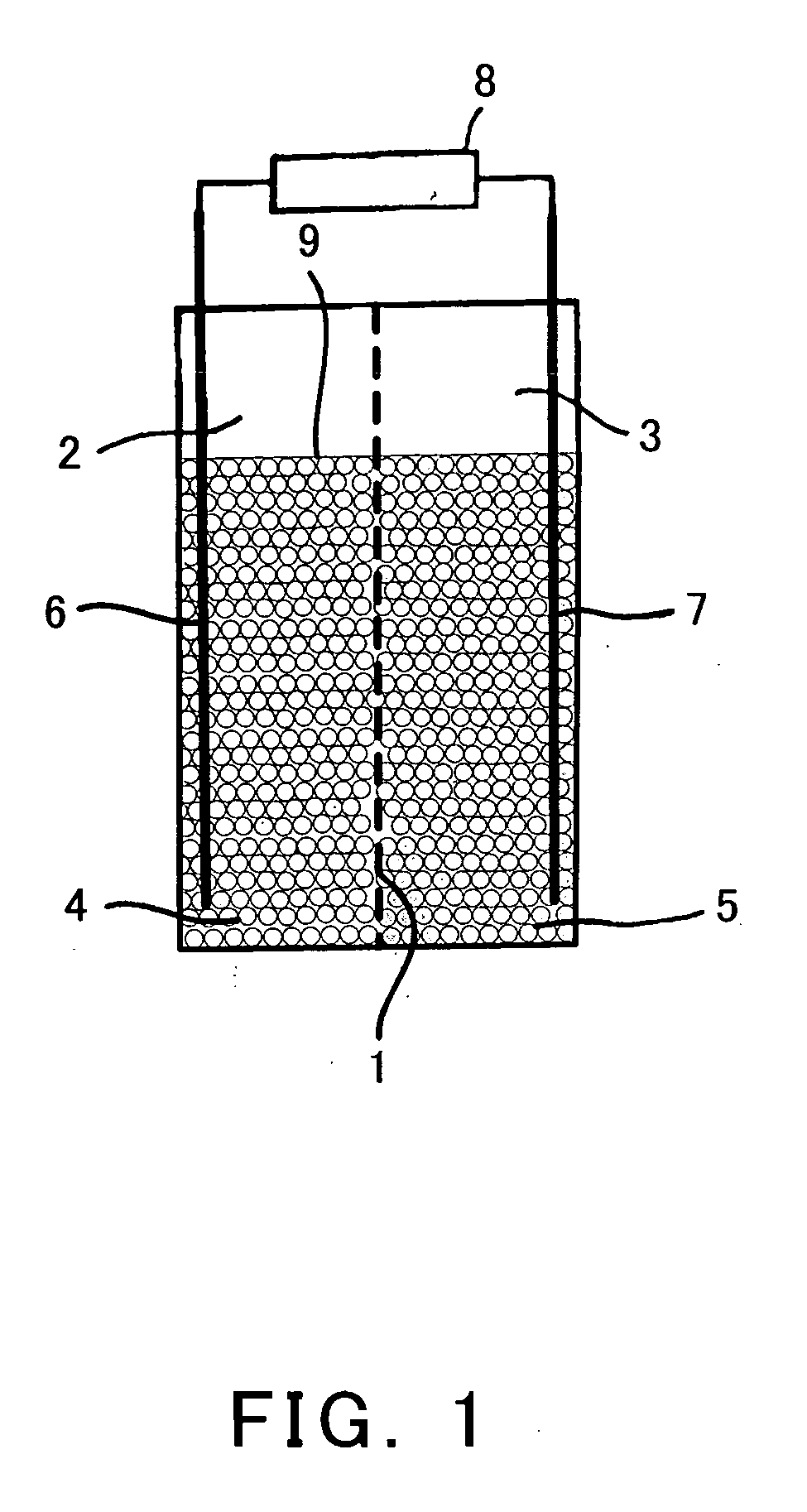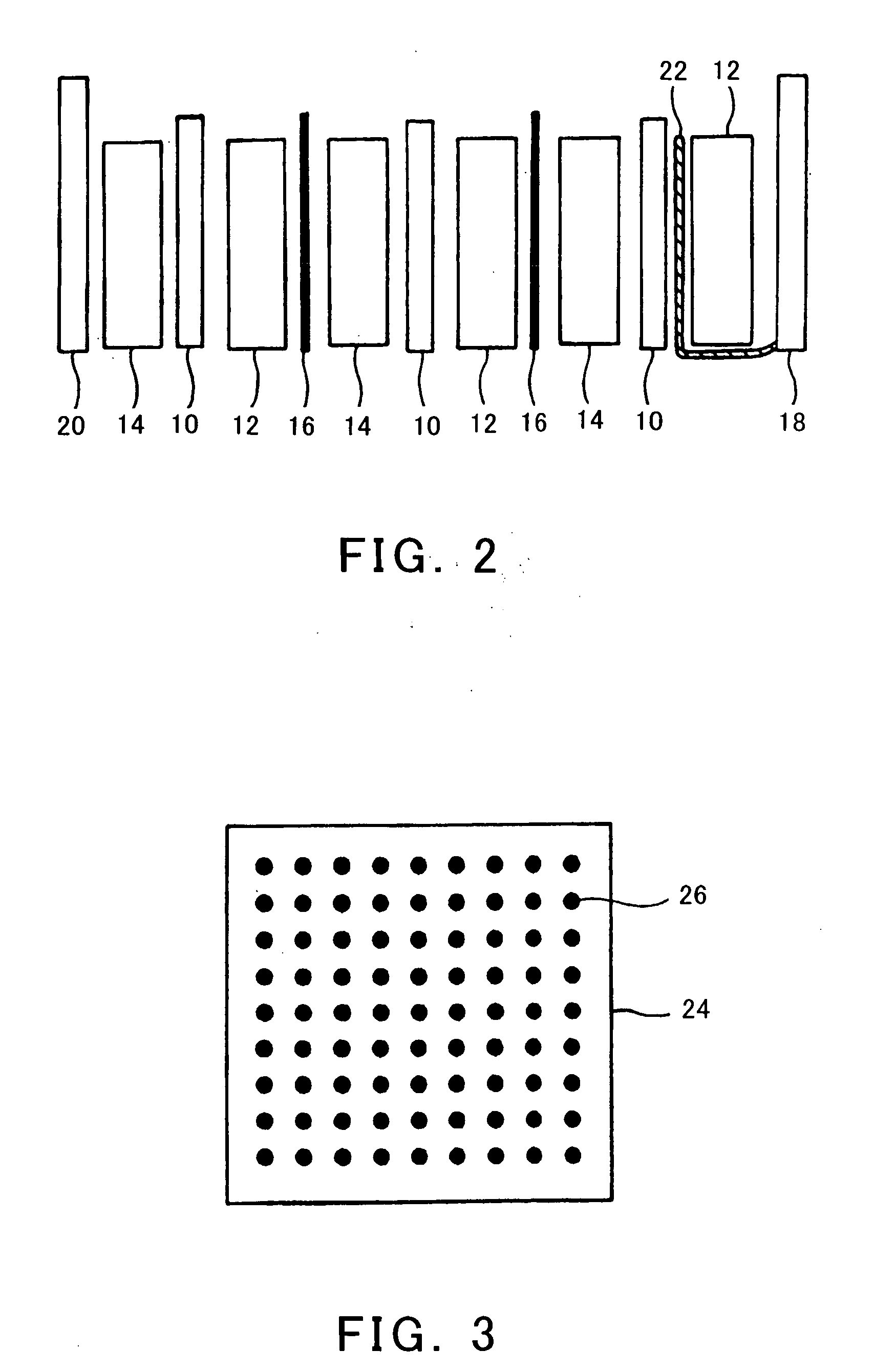Three-dimensional cell and its electrode structure and method for manufacturing electrode material of three-dimensional cell
a three-dimensional cell and electrode material technology, applied in the field of three-dimensional cells, can solve the problems of preventing separation, achieving adhesive, and limit of increasing the area per sh
- Summary
- Abstract
- Description
- Claims
- Application Information
AI Technical Summary
Benefits of technology
Problems solved by technology
Method used
Image
Examples
first embodiment
[0161] Referring to FIG. 6, is shown an example of a high power type three-dimensional battery in accordance with the present invention. The present embodiment is a battery that is constructed of a single basic unit alone. A resin and an electrically conductive filler are added to an active material substance which causes a cell reaction, and the mixture is formed and cured to prepare an active material forming product in particle, plate, block, rod, or the like form. In this case, an active material substance in the form of powders may be used as it is. Alternatively, a secondarily formed active material in the form of particles may be used. Additionally, a powdered or particulate active material like paste by the use of PVA or the like may be used. Active material substances of all kinds may be used to form an active material capable of causing a cell reaction, regardless of the type of battery and regardless of cathode or anode. For the case of nickel-hydrogen secondary batteries...
fifth embodiment
[0178] Referring to FIGS. 11 and 12, is shown an example of the high power type three-dimensional battery in accordance with the present invention. In a bellows-shaped unit (a basic unit) of the present embodiment comprising cathode and anode active materials which are so incorporated as to face each other across a separator, the number of cathode active materials is greater than the number of anode active materials by one, or vice versa, and either the cathode active materials or the anode active materials, whichever are greater in number, are disposed at each end of the basic unit.
[0179] Referring to FIG. 11, is shown a basic unit by way of example in which anode active materials 42 are disposed on both sides of a cathode active material 40, with a bellow-shaped separator 46 sandwiched between the cathode active material 40 and each anode active material 42. Other structures and operations are the same as the first embodiment. In addition, the bellows-shaped basic unit of the pres...
PUM
 Login to View More
Login to View More Abstract
Description
Claims
Application Information
 Login to View More
Login to View More - R&D
- Intellectual Property
- Life Sciences
- Materials
- Tech Scout
- Unparalleled Data Quality
- Higher Quality Content
- 60% Fewer Hallucinations
Browse by: Latest US Patents, China's latest patents, Technical Efficacy Thesaurus, Application Domain, Technology Topic, Popular Technical Reports.
© 2025 PatSnap. All rights reserved.Legal|Privacy policy|Modern Slavery Act Transparency Statement|Sitemap|About US| Contact US: help@patsnap.com



